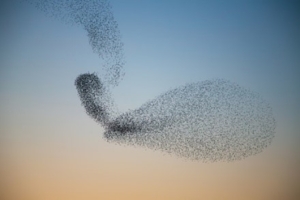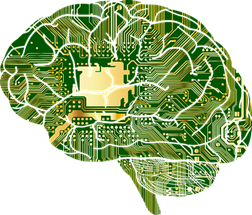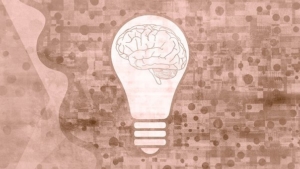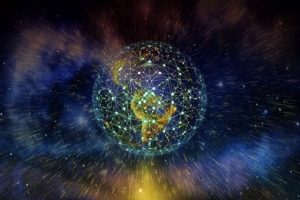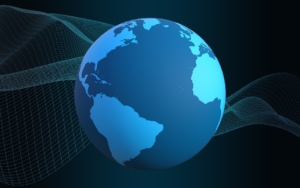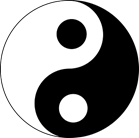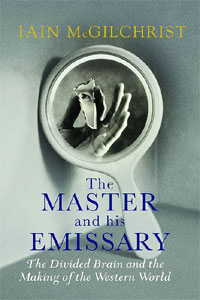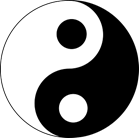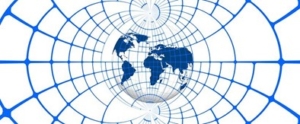Evolution only continues a process over long periods of time if it is serving a useful and important function. So why do we continue to dream at night?
This essay will cover:
- The physiological reason we need to dream;
- Dreams and the Right Hemisphere;
- How dreams have inspired music, art and science;
- The value of nightmares;
- Some useful principles to enhance your dream work.
- “The Magic Mirror” that never lies.
Before diving into the immense creative/liberating force that dreams provide, since this website is devoted to whole-brain thinking and an understanding of the distinction between the two hemispheres of our brains, let’s start with the important practical physiological/emotional function dreaming provides.
The “Safety Pressure Valve”
Every one of us dreams 4-6 times every night. Obviously, we don’t remember the vast majority, so what is the biological function of the dream? Turns out if we didn’t dream frequently every night, we’d probably go insane.
Thanks to 21st century computer-driven technology (EEG, MRI), sleep laboratories can now see inside the brains of volunteers while they are dreaming. The dream state is associated with rapid eye movement (REM),
so, researchers know that when a volunteer’s sleep pattern stimulates the eyes to move underneath the eyelid, a dream is taking place. Dream lab researchers also learned from seeing inside the brain and having the sleeping volunteers hooked up to electrodes measuring their vital organs, that just preceding the eyes going into REM activity, there is a burst of electrical energy originating in the brain stem. When this burst of energy gets to the visual cortex, REM is generated and we’re on the way to a dream. In addition to REM, the dream state induces a relaxation of our muscles, faster breathing and increased brain activity.
But this doesn’t answer the question: What evolutionary reason did Nature’s Intelligence have for the brain generating dreams? One major reason was revealed in sleep labs when volunteers were awakened by researchers every time the computer screen showed they were entering the REM stage. Within a few days these volunteers reported increased anxiety and depression compared to those awakened during non-REM sleep.
At the practical, physiological level, the dreaming process is analogous to a boiler which has a safety release valve. The valve periodically releases pressure to ensure the tank doesn’t build up excessive pressure and explode.
During the day, no matter how positive events go for us, our unconscious mind, which determines well over 90 percent of our thoughts and behaviors, experiences high levels of stress, anxieties and warnings which build up pressure. During the REM dreaming stage, regardless of the content of the dreams that night, a major function is to release some of the built-up stress/anxiety energy to help keep us safe from emotional overload.
This “safety-valve release” system also appears in many animals besides us humans. Scientists are almost certain other animals dream as they have the same capacity for REM sleep. Dogs, cats, even reptiles have been studied to show their electrical brain patterns go into a similar REM stage as we do. (Here is an incredible video of a mother cat calming her sleeping kitten who whose paws are in rapid motion as if having a nightmare).
But is the “safety-valve release” the only reason we dream?
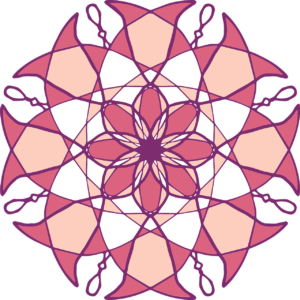
Dreams & the Right Hemisphere
The practical function of dreams as a safety release valve relates more closely to the left hemisphere of our brains. But there is substantial evidence over centuries and millennia attesting to the creative, psychospiritual function of dreams.
To understand and appreciate the more enlightened function of our dreams requires a shift to a more right-hemisphere view as now we work with and play with more confusing, mysterious, byzantine imagery and story lines.
And it is worth asking why nature’s intelligence, through the evolutionary twists and turns out of which we emerged, set up our brains physiologically to be more directly connected to the streams of messages percolating up from our unconscious.
As noted in the book which greatly inspired this right brain network website, “The Master and his Emissary: The Divided Brain and the Making of the Western World”, Dr. Iain McGilchrist writes:
“…during REM sleep and dreaming there is greatly increased blood flow in the right hemisphere, particularly the temporoparietal region. EEG coherence data also point to the predominance of the right hemisphere in dreaming.”
He then adds,
“When we remember that it is the right hemisphere that succeeds in bringing us in touch with whatever is new by an attitude of receptive openness to what is—by contrast with the left hemisphere’s view that it makes new things actively, by willfully putting them together bit by bit—it seems that here, too, is evidence , if any further were needed, that the right hemisphere is more true to the nature of things.”
That the right hemisphere is more stimulated by and receptive to the mysteries of the unconscious in general, dreams in particular, should come as no surprise to those who have read previous essays in this section. For while both hemispheres are clearly essential in our lives, since the left hemisphere is more attuned to verbal language information which can be analyzed rationally, the right hemisphere is more open to non-verbal language and much more receptive to play with the more uncertain, at first opaque and often ambiguous nature of the language of dreams.
What I have learned from my over 20 years of studying the nature of dreams, leading dream groups and working my own dreams is a powerful paradox: While on the one hand, we can learn much about how dreams communicate important, life-enhancing messages to our conscious minds (as will be presented in this essay), at the same time, it is the very darkness and mysteriousness of dream contents that are important to meet on their own grounds, whether or not we come to understand them.
Creative / Life-Enhancing Guides
History has provided us with clear proof of how dreams have inspired great music, art and spiritual breakthroughs. Some noted examples:
Paul McCartney, “Yesterday”
The melody for the most-covered song in music history came from a dream. Here is Paul’s account:
“I was living in a little flat at the top of a house and I had a piano by my bed. I woke up one morning with a tune in my head and I thought, ‘Hey, I don’t know this tune – or do I?’ It was like a jazz melody. My dad used to know a lot of old jazz tunes; I thought maybe I’d just remembered it from the past. I went to the piano and found the chords to it, made sure I remembered it and then hawked it round to all my friends, asking what it was: ‘Do you know this? It’s a good little tune, but I couldn’t have written it because I dreamt it.’”
Interesting note: The original title Paul came up with for the dreamt tune was “Scrambled Eggs.” Why such an irrational, offbeat title? Paul never explicitly says, but given the power of the unconscious mind communicating through dreams, can it be just a coincidence that “scrambled” are often how we would describe the often confusing, irrational nature of our dreams and that the “egg” is such an apt metaphor for the fertility of dream content?
“The Persistence of Memory”
Salvador Dali called his world-famous depiction of melting pocket watches a “dream photograph.” The article “The Story Behind Salvador Dali’s ‘The Persistence of Memory” reveals that:
“The melted versions of typically hard objects portray the fine line between a dream state and a real state. Dali sought to paint the dream world itself and mastered unique ways of bringing dreams into the real world.”
Jekyll & Hyde
One of the most famous novels in all literature, “The Strange Case of Dr. Jekyll and Mr. Hyde”came to Robert Louis Stevenson during a dream.
“According to his essay, “A Chapter on Dreams” (he racked his brains for an idea for a story and had a dream, and upon waking had the intuition for two or three scenes that would appear in the story Strange Case of Dr Jekyll and Mr. Hyde. Biographer Graham Balfour quoted Stevenson’s wife Fanny Stevenson:
In the small hours of one morning, […] I was awakened by cries of horror from Louis. Thinking he had a nightmare, I awakened him. He said angrily: ‘Why did you wake me? I was dreaming a fine bogey tale.’ I had awakened him at the first transformation scene.”
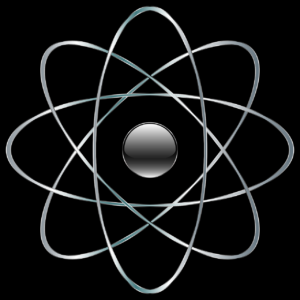
Dreaming the Atom
While it is not surprising that surrealist art and a surrealist work of literature would be inspired by dreams, dreams are responsible for major scientific breakthroughs.
Niels Bohr, Nobel Prize-winning physicist and one of the founders of quantum mechanics (I discussed his love of the spiritual yin/yang symbol in Essay #7) reported that he first saw his vision of how atoms were structured in a dream:
“Bohr often spoke of the inspirational dream that led to his discovery of the structure of the atom, in turn making him the father of quantum mechanics. Reportedly, Bohr dreamed about a horse race in which the marked lanes on the racetrack were just like the fixed and specific orbits that electrons travel around the nucleus of the atom. After waking up from this vision, he ventured to his lab and searched for scientific evidence to support his theory, and voila — his dream of atomic structure later landed him a Nobel Prize for Physics.”
Industrial Revolution Hangs by a Thread
One of most influential dreams in human history came from a particularly horrifying nightmare.
Unless you are reading this essay naked or are wearing totally hand-made clothing, the intense nightmare which inspired the solution to the first effective sewing machine has an influence on you right now.
It’s easy to forget that before the sewing machine was invented in 1846, making a shirt would take around 14 hours. A dress, almost 7 hours. The new invention totally transformed the clothing and shoe industries, making good clothing available to the majority of people, not just the rich and privileged. And it helped kick off the Industrial Revolution which would so expansively define modern history.
The nightmare experienced by Elias Howe in 1846, as do virtually all nightmares if we are willing to explore them deeply, contained the insightful shift needed to solve what was then the vexing issue of creating an efficient, effective sewing machine. My dream teacher, Dr. Jeremy Taylor loved recounting Howe’s nightmare as a teaching tale of how nightmares can be such rich resources:
“Howe had been struggling to invent a machine that would sew with the same speed and efficiency as Hargreaves’ and Cartwright’s new machines would spin and weave, but with no success. As the tale goes, exhausted by frustration, Howe fell asleep at his workbench one night and had this dream:
He is in Africa, fleeing from cannibals through the jungle. Despite his frantic efforts to escape, the natives capture him, tie him up hand and foot, and carry him back to their village slung from a pole. There they dump him into a huge iron pot full of water. They light a fire under the pot and start to boil him alive.
As the water starts to bubble and boil around him, he discovers that the ropes have loosened enough for him to work his hands free. He tries repeatedly to take hold of the edge of the pot and haul himself out of the hot water, but every time he manages to heave himself up over the edge of the pot, the natives reach across over the flames and forcibly poke him back down into the pot again with their sharp spears.
When Howe awoke from this “nightmare,” much of his mind was absorbed with sorting through the emotions of the dream–but another part was able to note with objectivity, “That’s odd–those spears all have holes in the points….” As Howe came more fully awake, he thought, “Holes in the points… holes in the points! That’s it! That’s the answer!
As he awoke, Howe realized that the trick to making his sewing machine work was to move the thread transport hole up to point of the needle (as opposed to a handheld needle, where the hole is on the base). It then was a relatively simple matter to design a system of gears that would cause the needle to poke the thread down through the layers of cloth, wrap it around a second thread, and then pull it up again, all very neatly and efficiently. And with the invention of the sewing machine, the last bottleneck to the mechanical production of clothing was broken–this dream leads very directly to the realization of the industrial revolution!”
The key to Howe uncovering the deeper meaning of his nightmare was managing to overcome the discomfort, re-play the dream in his mind and feel the importance of its key image: the hole in the spears. This points to (pun intended) a good strategy when awakening from a dream: Identify a particular image or action that is most perplexing or emotionally powerful and re-play that part of the dream it in your mind a few times or more until an insight or felt intuition emerges.
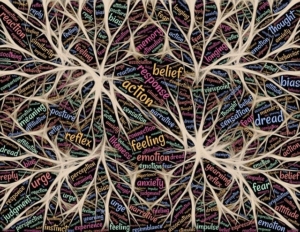
Dr. Jeremy Taylor explains the above phrase on his website:
“Whenever any dream is remembered, it is an indication that the waking mind has a creative, transformative role to play in the evolution of whatever issue the dream is presenting. For millions of years, the ability to pay immediate and focused attention to nasty, threatening stuff has been a primary survival test. The creatures who pay effective attention to threats tend to survive, and the ones who don’t tend not to survive. In this way, we have been shaped by natural selection to be inherently predisposed to pay attention to ugly, scary, and menacing experiences.”
At the same time, American culture in particular prefers to promote the Hallmark Card/soften the blow/feel-good palliatives to the direct/uncomfortable reality check. As Jeremy discovered in his decades of globe-trotting dream work, nightmares are among the most powerful guides we have towards inner psychospiritual growth, if we learn to unpack their hidden meanings. (Any of Jeremy’s books are great place to start).
Given the mind-bending shock of the sped up, globally connected data barrage of the current information age, exacerbated as I write this by over a year in which for the first time in human history, major economies and cultural societies shut down to deal with a virus, facing up to and finding the hidden meanings in our nightmares becomes, as Jeremy puts it, a “primary survival test.”
One of the first principles of dream work Jeremy teaches, one I and the others participating in his dream groups can attest,is that all dreams, including the most frightening nightmares, come as Jeremy puts it, “in the spirit of health and wholeness.” This requires a shift to a more right-hemisphere proclivity for imagination and novel insight. While dreams can be analyzed in a more left-hemisphere, linear/associative way, to get to the core of a deep dream, particularly a nightmare, calls for a more intuitively creative re-playing of the dream to see and feel what novel insights emerge.
Jeremy writes:
“Ironically, for this reason I take heart every time I have (or hear about) a dream that involves large, planet-wide problems like destruction of the environment, plague, military conflict, or other massive disruption of society. The fact that we remember such dreams suggests that we are able to respond creatively and effectively to these problems, in the same fashion that dreams addressing seemingly “insoluble” personal problems always indicate our ability to deal with those problems. Nightmares may also provide symbolic suggestions and specific creative inspirations, provided we have the wit and wisdom to pay attention.”
Embedded in this perception is one of Jeremy’s key principles for doing effective dream work: If we weren’t capable of dealing with a dream, our psyche would have protected us by not letting us remember it. Once remembered, its hidden ‘gold’ can be retrieved.
Jeremy writes:
“The worst case dream calls upon the dreamer not only to see and accept the depths of depravity that reside in every human psyche, but even more importantly, to become more conscious of and responsible for our ability to face, overcome, and give transformative, creative, and spiritual expression to those archetypal shadow energies.”
For those familiar with the insights of Carl Jung, the most famous psychologist of the 20th century, you can detect in Jeremy’s words the Jungian influence of “shadow” and “archetype.”
What’s significant here is the calling on us to face our own shadow energies, those dark, primal fears genetically and culturally inherent in our brains. For when we face those personal “shadows,” they not only lose their fearful power over us, but often reveal insights and meanings which can lead to a major breakthrough.
One of my favorite insights from Jeremy on the importance of frightening and uncomfortable nightmares:
“Another way of looking at such dreams is that they are “rescue missions” undertaken by the dreaming psyche in the as-yet-unredeemed depths of the collective unconscious.”
The right hemisphere comes into play here because while the left hemisphere is skilled at analyzing dreams, to get to the deeper levels often requires more imagination, intuitive feel and, most importantly, a willingness to be open to total surprise.
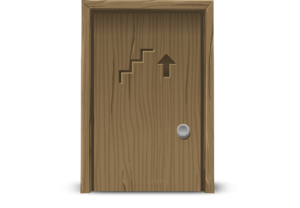
Dark Humor
As I became more experienced working my own dreams and those within dream groups, I discovered an interesting characteristic: Often our dreams, particularly the most frightening and confusing ones, can be more fully understood by looking for the hidden humor or deep joke, like a Zen Koan, a banana peel put in our path to help us “slip into” a transformational insight.
Here is my favorite experience with such a dream.
About 10 years ago, a close friend of mine called me up, sounding quite anxious, and asked if I could come over right away and help him understand a nightmare he had. I was surprised to get the call since he had never showed an interest in dreams over the many years I had known him.
He told me that for the past few days he had been suffering from intense stomach pain and could barely get out of bed. He had a great mistrust of doctors and despite his wife’s pleas to let her drive him to the emergency room, he wouldn’t budge. He felt somewhat better that morning, but had experienced the mysterious nightmare.
Here is the dream:
I’m at a resort of some kind. I’ve never been here before. I’m finishing up dinner in the café on the premises and pay my bill. I suddenly feel exhausted and head to my room for a good night’s sleep. But as I walk down the hallway of guest suites, I’m confused by the fact that there are no numbers on any of the doors and I can’t remember which is my room. I keep staring at these doors with no numbers and wake up distressed and anxious.
The way I was taught dreams is take on the dream as if it were my own, and discuss the dream from this point of view rather than say something like, “This is what your dream means.” (This will be clarified towards the end of the essay when discussing Jeremy Taylor’s Essential Principles for Dream Work.)
Like any good story, the opening scene often introduces the main theme. First, I mentioned to my friend that if this were my dream and I was experiencing intense stomach pain in waking life, it’s interesting that “I’m finishing up dinner.” Obviously in the dream, there is no physical stomach pain and I was able to digest my meal. In addition, “I pay my bill,” which in my version of the dream is a metaphor for a willingness to take responsibility for (“pay the bill”) whatever is making me anxious in waking life.
Note: This important start to the working of the dream can be credited to left-hemisphere logical thinking and analyzing the relationship between finishing a meal and paying the ball in the dream to the anxious situation in waking life.
While I could see from my friend’s body language that he was somewhat relieved at this insight, I knew it was the mysterious missing of numbers on the doors that needed to be addressed. And this would require a shift to the right hemisphere potential to enter into mystery, volatility and ambiguity while waiting for an insight to emerge.
When facing a mysterious aspect of a dream such as the missing numbers on the guest suites at this dream resort, it’s helpful to ask oneself (or the person whose offered the dream) clarifying questions. So, I asked:
“Did you notice anything else different about the doors other than the missing numbers?
And “What kind of carpeting or flooring did the resort hallway have?
My friend responded, “No, all I remember is numbers on the doors and not being able to find my room.”
I felt pressure to help him and come up some kind of useful insight, but felt stuck. Then I remembered how that I was able to get to an “AHA!” moment of recognition from working some of the more bizarre dreams I had experienced by looking for a hidden joke. As previously mentioned, many dreams contain puns and comical twists which, if uncovered, lead to insight.
I closed my eyes and as I re-played in my mind walking down the dream hallway without any numbers on the doors, it hit me—and I must have visibly smiled for my friend asked, “What’s so funny?”
I opened my eyes and said, “If this was my dream, it’s coming to tell me I’m not going to die from this stomach pain.
“How do you get that? He asked incredulously.
“Because the missing numbers on the doors means ‘my number’s not up yet.”
My friend laughed out loud and the next day, feeling less anxious, saw a doctor who told him he was suffering from a strong case of stomach flu and would recover with a few more days of rest.
Useful Principles for Dream Work
Whether working with your own dream or in conversation with others about their dreams, here are five key principles which Dr. Jeremy Taylor advocated, followed by some that I add based on my experience. The key principles Jeremy advocated:
All dreams speak a universal language and come in the service of health and wholeness. There is no such thing as a bad dream–only dreams that sometimes take a dramatically negative form in order to grab our attention.
Only the dreamer can say with any certainty what meanings his or her dream may have. This certainty usually comes in the form of a wordless “Aha!” of recognition. This “Aha” is a function of memory, and is the only reliable touchstone of dream work.
There is no such thing as a dream with only one meaning. All dreams and dream images are “overdetermined,” and have multiple meanings and layers of significance.
No dreams come just to tell you what you already know. All dreams break new ground and invite you to new understandings and insights.
When talking to others about their dreams, it is both wise and polite to preface your remarks with words to the effect of ‘in my imagined version of the dream…’ and to keep this commentary in the first person as much as possible. This means that even relatively challenging comments can be made in such a way that the dreamer may actually be able to hear and internalize them. It also can become a profound psycho-spiritual discipline – ‘walking a mile in your neighbor’s moccasins.’
My additions (all of which Jeremy agreed with. He chose to highlight the ones above).
A short dream fragment can be just as meaningful as a long, narrative dream. Dreams have a “holographic” quality, meaning any one key symbol, action or event when re-played and actively encountered, can open up the greater meaning of the entire dream.
Dreams often use puns, satire and black humor to enlighten us. Discovering the hidden humor in a dream is often a profound and transformative experience.
Every dream is both unique to the dreamer and, at the same time, often has a more universal level, connecting into what Carl Jung referred to as the “Collective Unconscious.”
All dreams live in the present and so it is helpful to write down the dream in the present tense and consider the actions to be happening now, even if you are working on a powerful dream from many years ago.
A dream dictionary is a good place to start, poor place to end. While it is helpful to know, for example, that water in a dream almost always refers to the “emotional state” of the dreamer, it’s important to note the specific details of the water in each dream: Does the dream take place in a private pool, a pristine lake, a dirty bathtub, at the beach?
In other words, while noting the accepted meanings of various symbols from a dream dictionary (left-hemisphere strategy) it’s important to shift to the right-hemisphere’s ability to dive beneath the surface of the known meanings to the unknown, creative, ambiguous depth to see and feel what might emerge. That’s often how the “AHA!” moment is unveiled.
CODA:
Jeremy Taylor’s great phrase for the creative power of dreams is:
“The Magic Mirror that never lies.”
This “Magic Mirror” may not always reveal its hidden truths…but truths remain there to be uncovered. For really “big” dreams (to be discussed in the next essay), it may take days, weeks, months or years before a full “AHA!” is achieved. The good news is that by writing down, contemplating and talking about our dreams, this tends to generate additional dreams which build on previous ones and start to reveal recurring patterns which are quite useful to identify.
A final word from Jeremy Taylor:
“Initially, it always seems as though the most difficult task faced by the dreamer is to look into the ‘magic mirror that never lies’ and take more responsibility for the symbolic reflections of our weaknesses and failures. However, over time, it becomes clear that an even more challenging task is to acknowledge the size and scope of our creative gifts and our ability to transform ourselves and our world. The worst case dream calls upon the dreamer not only to see and accept the depths of depravity that reside in every human psyche, but even more importantly, to become more conscious of and responsible for our ability to face, overcome, and give transformative, creative, and spiritual expression to those archetypal shadow energies.”
This “Magic Mirror” that never lies is at the forefront of our evolutionary push forward. I say this based on an “AHA!” moment I experienced in of the dozens of dream group weekends I participated in with Jeremy and a group of interested dream workers:
We were working a particularly dark, powerful dream submitted by one of our group. There was a distinct “heaviness” in the air as we took turns projecting our insights into possible meanings of the dream when Jeremy broke in and said:
“These dreams are so powerful, and sometimes overwhelming, because they aren’t just our dream…they’re the dreams of our parents and their parents and their parent…”
This is something all of us already know. The genes we inherit from our parents contain not just memories of their unresolved traumas, challenges, successes, emotional blocks…but of their parents and so on, right down the generational lines…and as I’ll discuss in the next essay, our individual dreams are not just about us and whatever was passed down from our genealogical lines, but each dream has, on some level, a universal meaning connecting to what Carl Jung identified as “the collective unconscious.”
To connect the insight that our dreams are not just ours to the first principle about dreams brought up in this essay:
On the physiological level, dreaming provides an emotional safety release valve so that at night our brains can release some of the pressure built up by the tensions and stresses we experience each day. Nature’s intelligence gave us (and many animals) this physiological release valve. But it gave us humans a higher form of consciousness which, if we choose to exercise it, can unlock the deeper meanings and inherent truths our dream come to offer.
So, when we choose to write down our dreams, re-play them, contemplate their deeper meanings, share the dream with others, we are taking on the immensely valuable work of “consciously” liberating the hidden depths of not only our individual dreams, but those unworked out emotional and even spiritual blocks passed on to us from our ancestors as well as consciously freeing up previously locked down psychospiritual insights of the collective unconscious.
On the personal level, dream work offers opportunities for emotional and spiritual liberation.
On the larger, collective level, dreams offer a glimpse into the potential reason higher levels of consciousness emerged into our brains: A calling to consciously work out the deeper meaning of our existence and the best ways to influence evolution moving forward.
This is what I feel Jeremy Taylor was getting at by referring to dreams as “training films for spiritual warriors.”
Dreamwork offers both tools for personal liberation and for advancing conscious evolution. This includes not only the immense satisfaction of the “AHA!” moment of recognition into the deep meaning of a dream, but just as importantly, the willingness to let the dark currents of the dream’s inherent mystery wash over us, whether we understand it or not.
END.
Enjoy the following quotes and links:
“That which the dream shows is the shadow of such wisdom as exists in man, even if during his waking state he may know nothing about it…. We do not know it because we are fooling away our time with outward and perishing things, and are asleep in regard to that which is real within ourself.
Paracelsus
“Dreams are the guiding words of the soul. Why should I henceforth not love my dreams and not make their riddling images into objects of my daily consideration?
Carl Jung
